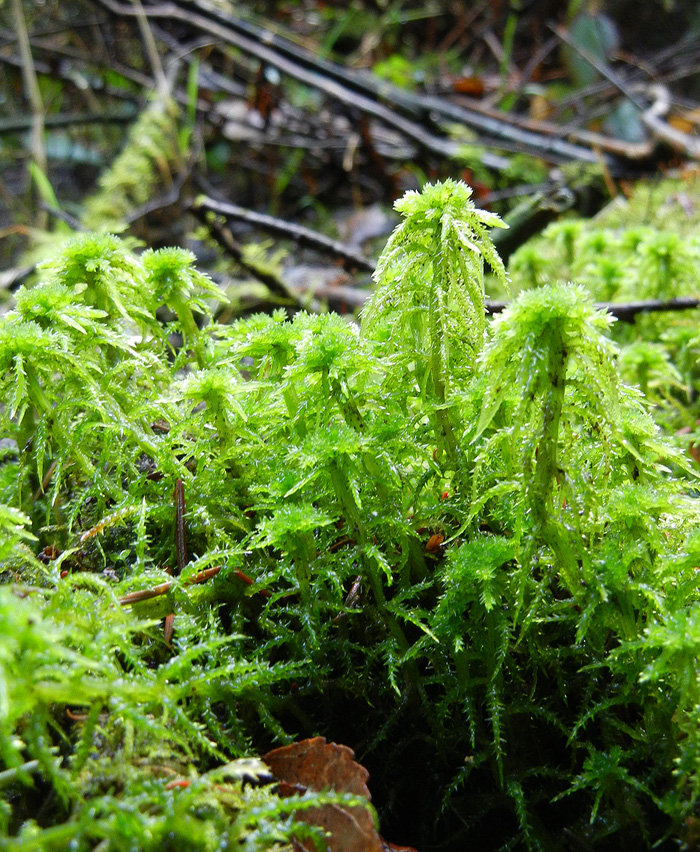
Sphagnum squarrosum Introduction to Bryophytes
The moss Sphagnum (peat moss) is ecologically and economically important. There is a paucity of physiological and developmental studies on Sphagnum because of the lack of an axenic culture system for its whole life cycle.
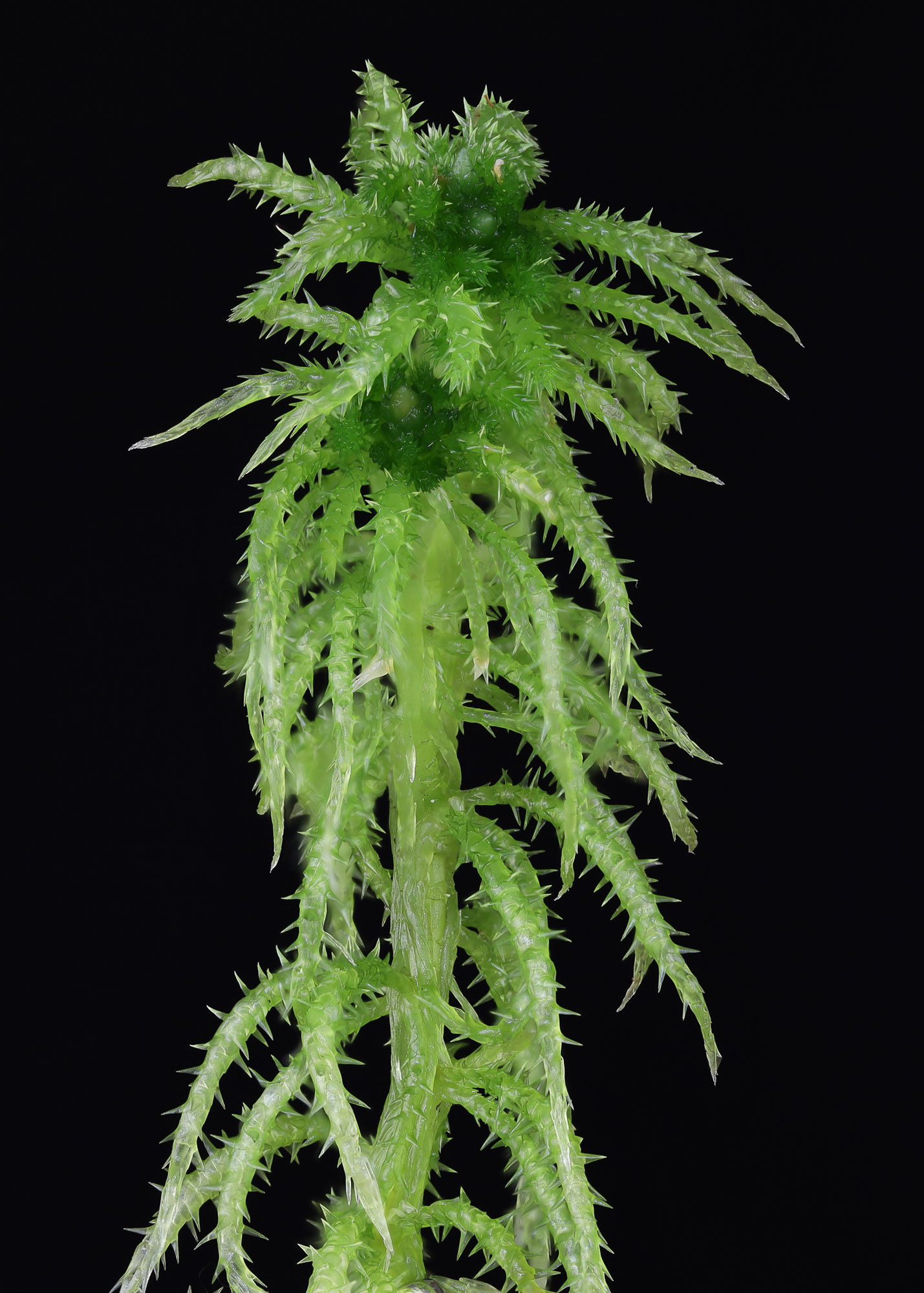
Sphagnum squarrosum British Bryological Society
We investigated the pH dependence of the elongation of and photosynthesis by Sphagnum squarrosum and S. girgensohnii in a coastal Picea glehnii peat mire in Cape Ochiishi, north-eastern Japan. S. squarrosum grew in the acidic centre of the P. glehnii forest and showed the highest photosynthetic rate at pH = 3.8. S. girgensohnii grew at the margin of the P. glehnii forest and showed the maximum.

Sphagnum squarrosum British Bryological Society
Sphagnum mosses are keystone species that shape their habitat through unique biochemical and morphological adaptations that together result in an acidic, permeable and nutrient-poor environment.
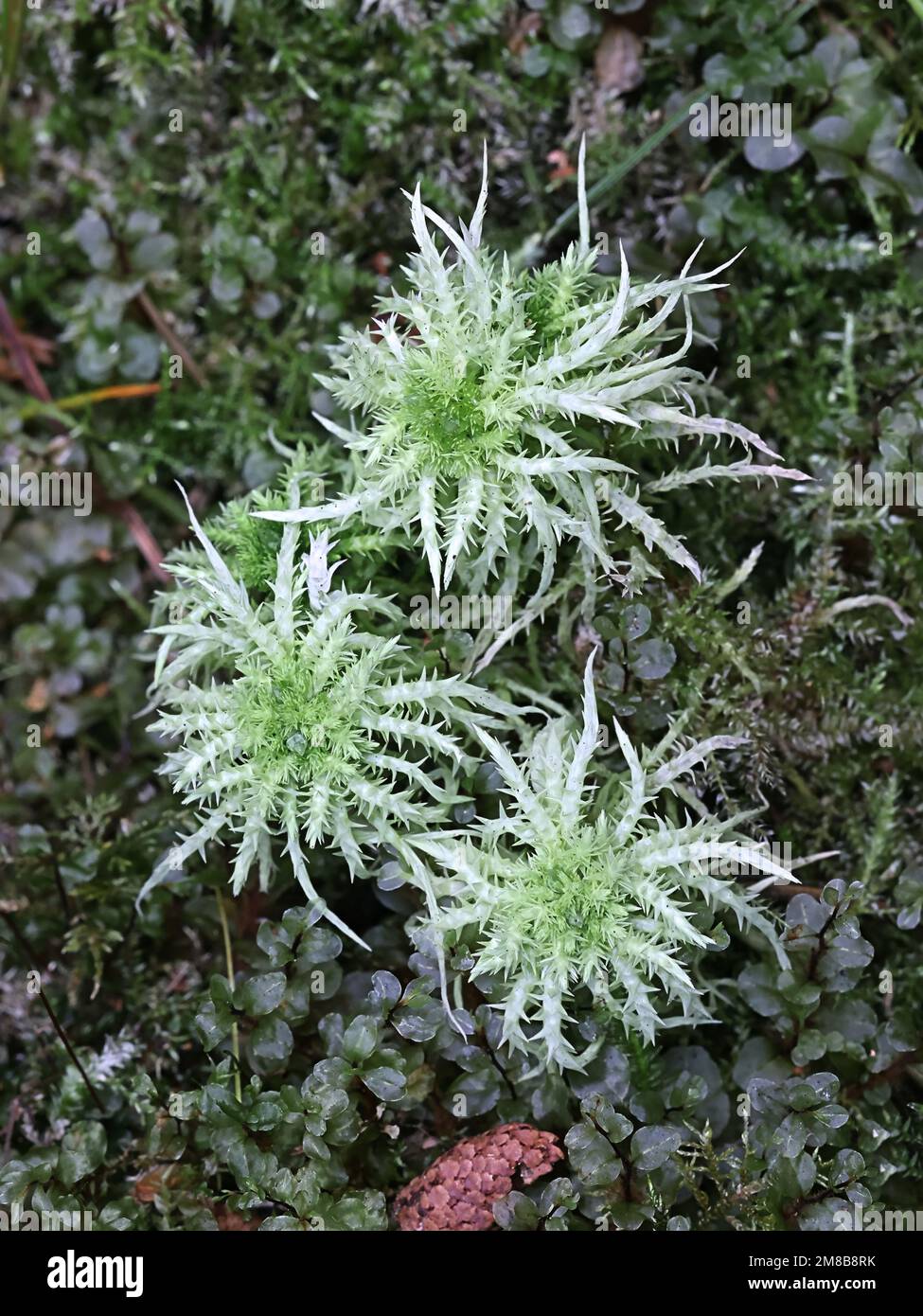
Sphagnum squarrosum, commonly known as the spiky bogmoss or spreading
Sphagnum squarrosum is one of two Irish Sphagnum species that are often referred to collectively as section Squarrosa. In the field these two species normally look quite different from each other.

Sphagnum squarrosum
17 Sphagnum squarrosum + Branch leaves imbricate (squarrose in shade forms), moderate in size (1-1.5 mm); hyaline cells of branch leaves with unringed pores on concave and convex surfaces; stem leaves as long or longer than branch leaves (1-1.7 mm) 3: Branch leaf hyaline cells near leaf base on convex surface mostly aporose and on concave.

CNABH Portal Sphagnum squarrosum
Sphagnum squarrosum, commonly known as the spiky bog-moss or spreading-leaved bog moss is a species of moss which grows in nutrient-rich, damp soil. Typical habitats include woodland, the banks of streams and ditches; it can even be found at high altitude in damp cirques. The species often grows near sedges (Carex), rushes (Juncus) or purple moor grass (Molinia caerulea).

Sphagnum squarrosum British Bryological Society
Sphagnum squarrosum Taxonomy ID: 128240 (for references in articles please use NCBI:txid128240) current name Sphagnum squarrosum Crome NCBI BLAST name: mosses Rank: species Genetic code: Translation table 1 (Standard) Mitochondrial genetic code: Translation table 1 (Standard)

Sphagnum squarrosum image 5452 at PhytoImages.siu.edu
Sphagnum squarrosum. Habitat . S. squarrosum is commonly found growing in woodlands, but can also grow in swamps or seepage sites, but not in normally in bogs. It tolerates a certain amount of shade, and can also be found growing near a watercourse or by waterfalls.
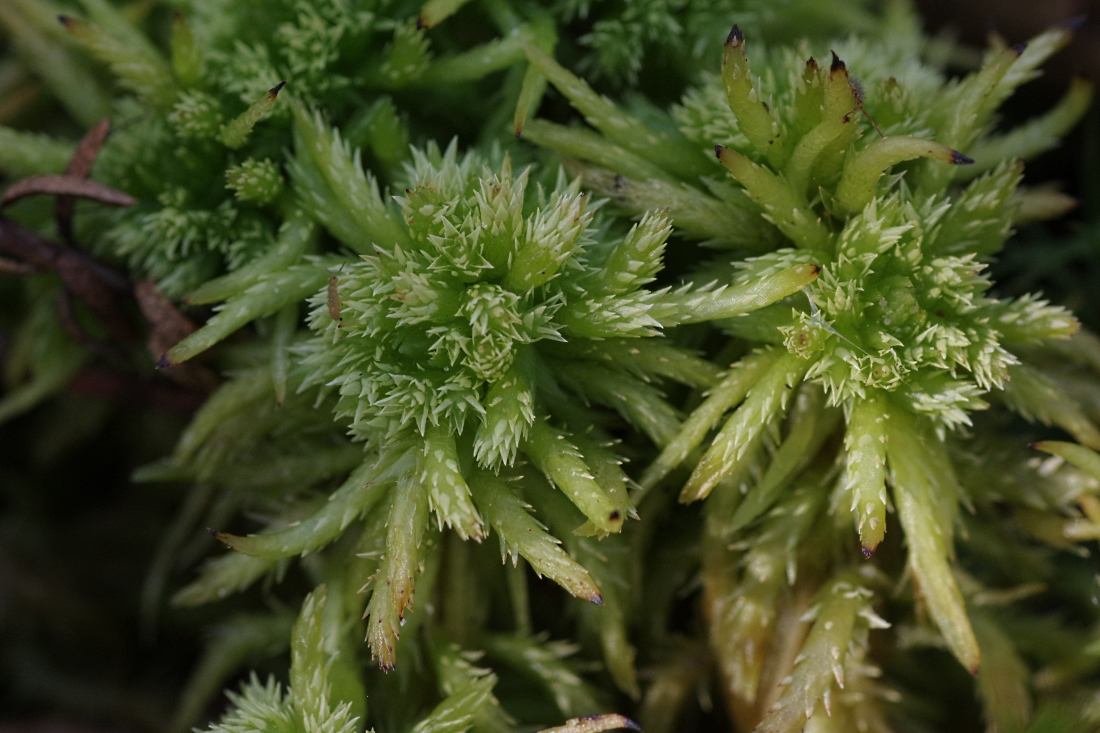
Sphagnum squarrosum Изображение особи Плантариум
Sphagnum squarrosum var. subsquarrosum Russ. ex Warnst., Hedwigia 27: 271. 1888. Plants rather robust, jade green to yellowish green or yellowish brown, in loose tufts. Stem cortex in 2-4 layers, hyaline cells thin-walled, without fibrils, sometimes with large pores; central cylinder pale green or yellowish orange.
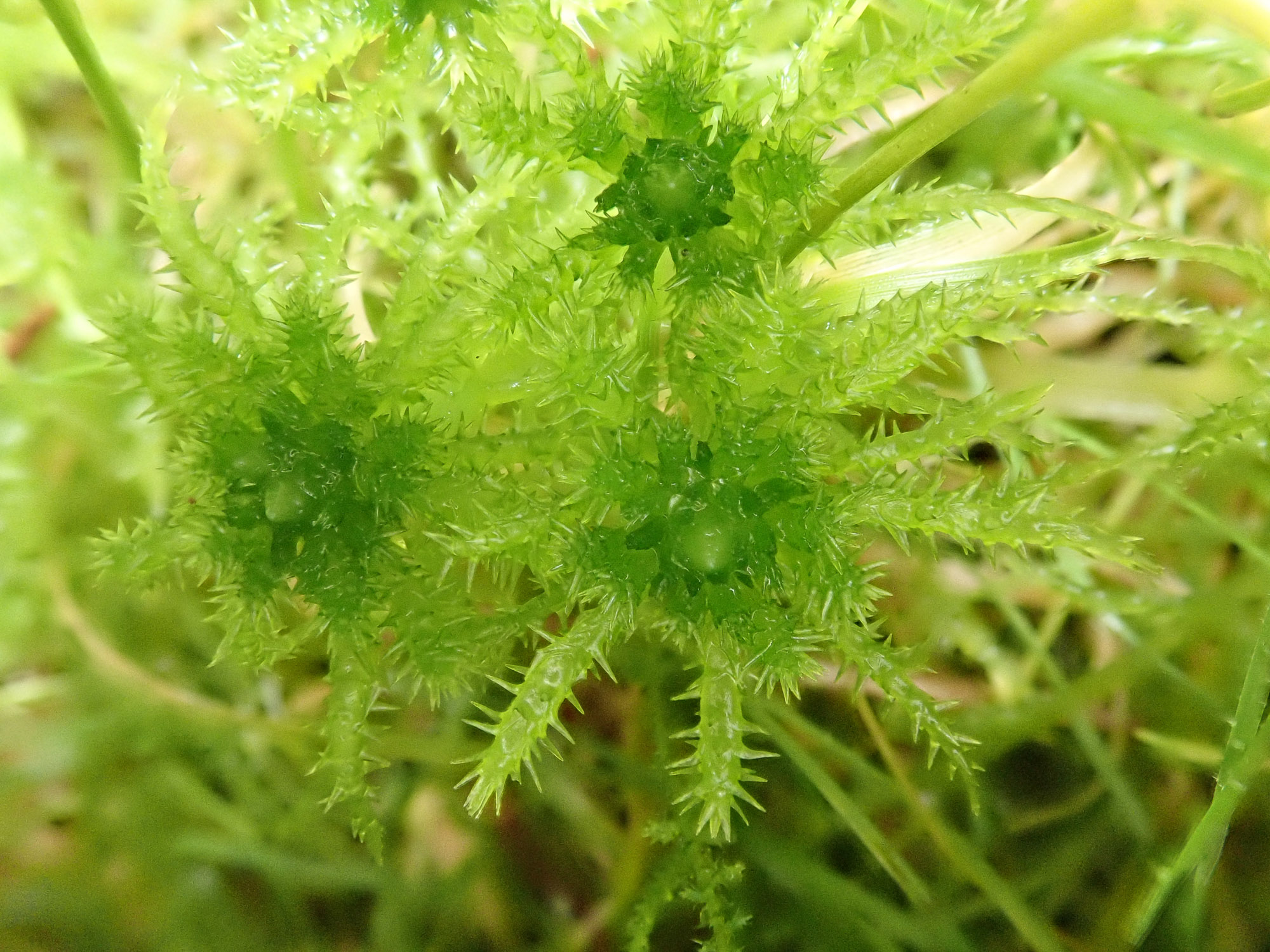
Sphagnum squarrosum British Bryological Society
Specimens of Sphagnum fimbriatum Wils. and Sphagnum squarrosum Crome were either obtained from European herbaria or collected by the authors (Tables S1 and S2, available online as supplementary material). We aimed to cover as much of the European range of the species as possible. Each sample contained a group of three to five shoots.

Sphagnum squarrosum close up Herbs, Close up
Sphagnum squarrosum, commonly known as the spiky bog-moss [1] or spreading-leaved bog moss [2] is a species of moss which grows in nutrient-rich, damp soil. Typical habitats include woodland, the banks of streams and ditches; it can even be found at high altitude in damp cirques.

Sphagnum squarrosum Berzedt tőzegmoha E.é. 5000 Ft Herbs, Plants, Moss
Scientific Name: Sphagnum squarrosum Crome Other Common Names: Shaggy Sphagnum (EN) , sphagnum (EN) , Sphaigne hérissée (FR) , Spreadleaf Peatmoss (EN) , Spread-leaved Peat Moss (EN) , Squarrose Peatmoss (EN)

Sphagnum squarrosum British Bryological Society
S. squarrosum has a wide central cylinder that is brown (or pale in shade forms) sheathed by a thin pale cortex of hyaline cells. S. palustre always has a much wider hyaline cortex that is 1/3 to ½ the width of its stem.

Sphagnum squarrosum, a woodland species that harbors spiders. Photo by
Sphagnum squarrosum Go to results page; Banks, trails, mineral soil. Atrichum angustatum + Go to results page; Atrichum undulatum group + Go to results page; Aulacomnium heterostichum (oak zone) Bartramia pomiformis (often in seepage) + Go to results page; Buxbaumia aphylla; Calypogeia sp. (L)
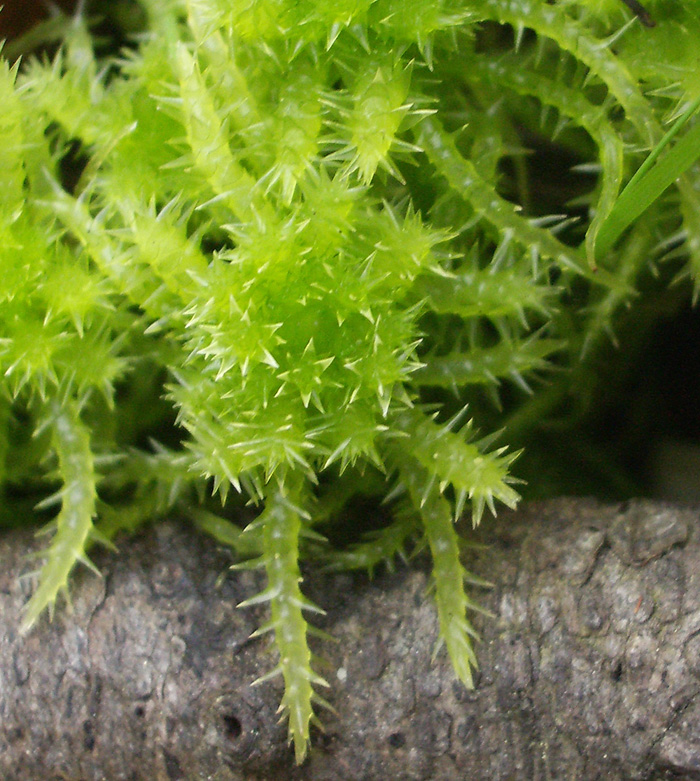
Sphagnum squarrosum Introduction to Bryophytes
Sphagnum squarrosum Crome sphagnum. Endangered, Threatened, and Rarity Information; This plant is listed by the U.S. federal government or a state. Common names are from state and federal lists. Click on a place name to get a complete protected plant list for that location. New Jersey . sphagnum;

CNABH Portal Sphagnum squarrosum
Synonyms: Sphagnum squarrosum var. imbricatum Schimper. Treatment appears in FNA Volume 27. Treatment on page 59. Mentioned on page 57, 58, 83, 85, 97, 101. Plants robust, stiff; green, pale green, yellow-green; large terminal bud; typically as loose carpets in coniferous forests. Stem green to redbrown; 2-3 superficial cortical layers.